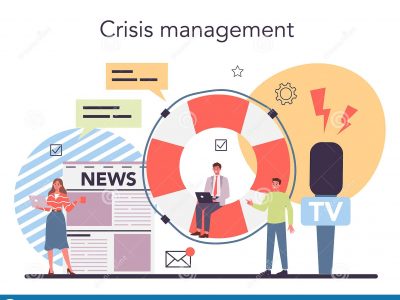How To Prevent Corporate Collapse Risk Management?
Risk Comes From Not Knowing What You’re Doing – Warren Buffet
Risks Should Be Managed, Not Avoided – Doris P Meister
By Questioning All The Aspects Of Our Business, We Continuously Inject Improvement And Innovation Into Our Culture – Michael Dell
If You Don’t Invest In Risk Management, It Doesn’t Matter What Business You’re In, It’s A Risky Business – Gary Cohn
Opportunities and risks go hand in hand with each other and corporations must go beyond the predetermined limits to grasp those opportunities to evolve, innovate and succeed. Such paths contain higher risks but when these risks return higher profits, then corporations praise ideas & backs. If the same undertaken risks fail to pay off, then where does the corporation stand and how can it efficiently tackle those damages & costs that incur due to such risk failures? This is where the organization needs to evolve well-structured corporate governance principles & rules that well-define the role of risk assesment for the organization. This article discusses in detail the relationship between strong corporates & risk management and how it is crucial for organizations in general.
Every company must have a safeguarding tool in its system that can help it to curtail risks but can also empower the company. That tool is ‘Risk Management’. Risk Management process is to identify probable business risks, and a company’s risk appetite and thus, prepare the company to cope with the consequences of risk failures. Also, it can be used to curtail risks by building a contingency mechanism that can be put in effect instantaneously when those risks occur.
To have a sound risk management practice in any organization, the organization needs to assess the kind of business risks it can take and might have to face in future.
4 Most Effective Risk Management Strategies For Corporate Collapse Prevention And The Repercussions Of Business Risks – A Glance
- Avoid Only Selected Risk Activities But Not All
Organizations need to take risks to grab lucrative opportunities. It would be unwise to avoid all risk related activities to protect the organization from the risks. The most ideal risk management strategy would be to assess the risk appetite of the organization and the nature of risks that is essential to take in the required transaction.
- Reduce The Magnitude Of Risks And Their Repercussions
Seek ways to reduce the impact of risks by creating contingency plans & enforcing those processes that can save the organization from high-risk consequences.
- Outline Apt Risk Management Measures Beforehand
An organization must adopt effective risk management measures like risk-sharing policy with related parties in business transactions, taking insurance policies, outsourcing works & processes to experts & specialists, preventive measure plans, etc.
- Assume The Potential Risks And Accept Their Incurrence
Organizations can allocate the task of listing the potential risks to the respective departments and leave the handling to them when they incur. Or the organization can build a financial reserve to recover from the repercussions of those risks.
Overall Changing Scenario In Corporate Governance – A Reality Check
Corporate governance is not an option but a necessity for an organization if its objective is to succeed and generate returns for its shareholders. Risk management is not a part of the corporate governance but its priority that must be integrated and accepted by the organization to safeguard the company’s assets, income, and reputation. It is now an accepted fact amongst several organizations including banks & financial institutions. Corporate governance is a set of internal management practices, policies, rules & guidelines that are required to adhere to & complied within the stipulated manner, by the required individual/group/department within that organization, for the welfare of that organization’s stakeholders. Here, the term stakeholders include the shareholders of the company, its managers, creditors, vendors, human resources & staff, and the consumers who have entrusted their loyalty in the hands of the organization.
In the corporate world, the need for corporate governance emerged when big corporations failed to generate returns for their investors and due to their bad governance practices, their debts & liabilities weighed more than their assets. Some of the major scams in the history of the corporate field like Nirav Modi PNB Bank Fraud, Satyam Scam, etc. compel government authorities and the companies to introduce corporate governance laws, policies & principles.
Risk culture can be embedded in the corporate governance framework if every person at every level within the company comprehends the company’s perspective on risks, takes individual responsibility to assess and manage business risks in every day’s action plan and motivates their colleagues to adopt this culture by adopting corporate governance guidelines issued by RBI, MCA, Basel committee, SEBI and related respective laws, organizations can embed effective risk culture in their corporate governance framework and can mitigate risks phenomenally.
Blog Author: Priyanka Rana – Team Manager, American Express









